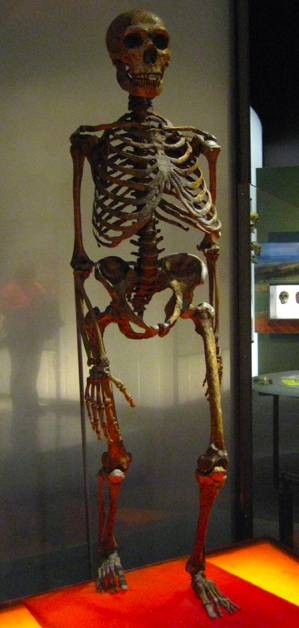Homo neanderthalensis
|
|
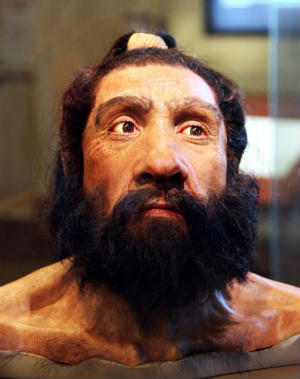 Homo neanderthalensis reconstruction (Enlarge) The Hall of Human Origins, Smithsonian. Image: Tim Evanson
Homo neanderthalensis reconstruction (Enlarge) The Hall of Human Origins, Smithsonian. Image: Tim Evanson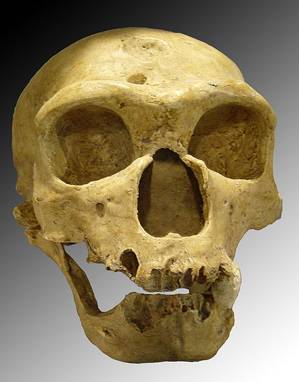 H. neanderthalensis skull, Chapelle aux Saints. (Enlarge) Image: Luna04
H. neanderthalensis skull, Chapelle aux Saints. (Enlarge) Image: Luna04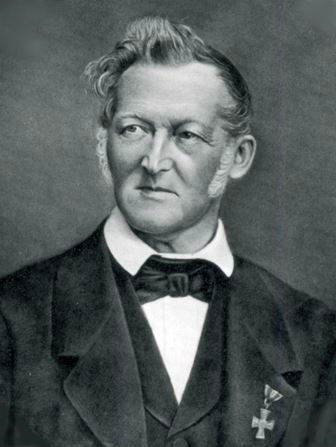
(1803-1877)
The earliest known discovery of Neanderthal skulls occurred at Engis, in present-day Belgium in 1829. However, though it was realized at the time that the skulls were of ancient origin, they were considered the remains of people little different from modern human beings. The next was a skull found at Forbes' Quarry, Gibraltar, in 1848 (Gibraltar 1). It, too, was seen as an ancient modern human.
But the first neanderthal specimen to be described as a species distinct from Homo sapiens, Neanderthal 1, was discovered in 1856 in Germany's Neander Valley (in German, the name Neanderthal means "Neander Valley"¹), near Mettmann in what is now North Rhine-Westphalia. The bones were embedded in clay that quarry workers were removing from a cave.
Originally, before quarrying began, the "valley" was really a narrow gorge of limestone cliffs pierced by the rushing waters of the river Düssel.² But extensive stone removal has since obliterated the cliffs, as well as the cave where the first find was made.
The workers thought they had found the bones of a cave bear (Fuhlrott 1859), and turned their find over to a local naturalist, Johann Carl Fuhlrott. He soon realized they were the remains of an ancient human being. Fuhlrott took the material to anatomist Hermann Schaaffhausen in Bonn for confirmation of his opinion and the two jointly announced their discovery in 1857 (Fuhlrott 1857, Schaafhausen 1857).
Much of the original specimen was lost because the quarry workers failed to recognize the importance of what they had found. Fuhlrott himself did not inspect the site until two weeks later. By then, the remaining bones were buried deep in a great heap of clay.
As a result, the only portions of the skeleton recovered were the skullcap (see figure right), two femurs, several arm bones, part of the left ilium, fragments of a scapula, and some ribs (Schaafhausen 1888). Surprisingly, however, additional material from Neanderthal 1 has recently been located (see Note 3 below).
If Fuhlrott and Schaaffhausen thought the facts indicated that their specimen differed in any essential way from modern humans, they did not say so initially. The idea that the bones were those of a distinct type of human, previously unknown, was first proposed by English geologist William King, the first scientist to use the name Homo neanderthalensis (King 1864).
Due to the careless mode of its recovery and to the subsequent destruction of the site, the age of Neanderthal 1 was long unknown. However, C14 dating has shown it to be about 40,000 years old (Schmitz et al. 2002).
Over the years, many additional specimens of Homo neanderthalensis have come to light — the total now stands at about 400 separate individuals. Consequently, the bony anatomy of this hominid is well known. In Homo neanderthalensis, brain size was on average 11 percent larger than our own — the mean cranial capacity of an adult was 1500 cc, versus 1350 cc for modern humans (Ponce de León et al. 2008: 13767).
Many facts are known, too, about the geographic distribution, age, and culture of this early human. Neanderthals were fully bipedal, made use of sophisticated stone tools, and ranged over much of western Eurasia (SEE MAP). In addition, neanderthals could make fire and build shelters with wooden frames. They also buried their dead, apparently with ritual — graves containing flowers, the pigment red ochre, and the bones of large game animals are known (Solecki 1975).
And yet, the facts seem to indicate that Homo neanderthalensis lacked important basic tools in Homo sapiens' repertoire, in particular, needles, fish hooks, and fish nets (Jordan 2001). Of course, without needles they could not have had sewn clothing.
Nor, it seems, did neanderthals engage in long-distance trade. It is unknown whether Homo neanderthalensis produced visual art or music, as did early Homo sapiens.
The earliest fossils attributed without controversy to Homo neanderthalensis date to about 300,000 years ago, the date of appearance of Mousterian tools, an advanced style of predominantly flint tools typically associated with neanderthals.
But earlier remains showing neanderthal-like traits are known from as far back as 600,000 years ago (these are associated with relatively primitive Acheulean tools). The classification of this older material is under debate and some workers say it should be assigned to Homo heidelbergensis or "archaic" Homo sapiens, or even to Homo rhodesiensis (although this last option seems rather questionable since no one is sure whether Homo rhodesiensis, based on a single skull of uncertain age, is even a valid taxon).
The youngest fossils assigned to Homo neanderthalensis — from Hyaena Cave, Gibraltar, and from Vindija Cave in northern Croatia — date to about 30,000 B.P. Hyaena Cave is one of four caves which together make up the Gorham's Cave complex. Stone tool evidence suggests neanderthals lingered on till around 22,000 B.P., though no known skeletons are that young.
Facts about Homo neanderthalensis:Habitat: Varied. Homo neanderthalensis occurred throughout much of western Eurasia during the generally frigid Pleistocene. Pronunciation: HOME-oh nee-AND-er-thuhl-EHN-sis (or nee-AND-er-thawl-EHN-sis). The English name is pronounced nee-AND-er-thawl or nee-AND-er-tawl. English speakers usually pronounce the th in neanderthal as /th/, as in that, but many scientists pronounce it as /t/. In recent literature the spelling neandertal occurs, but is not as common as neanderthal. Etymology: The Latin word homo means "man" or "human being." The Latin suffix -ensis was added to to Neanderthal to produce neanderthalensis, meaning "from the Neander Valley" (see notes 1 and 2 for additional information on the etymology of this name). |
|
Perhaps we are not from the apes alone?
|
An ongoing controversy has been concerned with the question of whether neanderthals should be treated as conspecific with modern humans. Some experts say yea, others, nay. The real root of this controversy, however, seems to lie in the fact that the word species lacks a generally accepted meaning. How can anyone decide whether modern humans and neanderthals belong to the same species when scientists cannot agree on a clear definition of the word species?
Interesting facts about other hominids:
Australopithecus bahrelghazali >>
|
Notes: 1. In 1901 a spelling reform in Germany replaced th with t throughout the language. Thus, words such as Thal and Thier became Tal and Tier. However, scientific names are unaffected by such changes; so Homo neanderthalensis retained its th. Some scientists have tried to change the English name of this hominid from Neanderthal to Neandertal, to bring it in line with modern German spelling, but this initiative seems to be losing steam due to the inertia of the long-established English spelling Neanderthal. 2. The Neander Valley is not named for the river, the Düssel, that runs through it. Rather it gained its epithet from the 17th century pastor and hymnist Joachim Neumann, whose last name was rendered in Greek as Neander. Neumann frequented the area and found inspiration for his hymns in the then rushing waters of the now obliterated gorge. 3. Remarkably, Ralf Schmitz and Jurgen Thissen, of Germany's Office for the Preservation of Archaeological Monuments, have recently managed to relocate the site where the other pieces of the original Neanderthal skeleton were dumped. In old paintings and maps of the cave, they were able to recognize a rock that still stands at the site. "They dug a couple of deep trenches nearby and began to sift through the rocks and debris at the bottom," says one of their colleagues, Barbel Auffermann, of the Neanderthal Museum. "Eventually, they found some bat teeth and pieces of stalactites. You only get those in caves." Then they set to work in earnest sorting through tons of earth. Eventually they found 20 additional pieces of bone. One actually fit the left knee joint of the original Neanderthal individual! |
Most shared on Macroevolution.net:
Human Origins: Are we hybrids?
On the Origins of New Forms of Life
Mammalian Hybrids
Cat-rabbit Hybrids: Fact or fiction?
Famous Biologists
Dog-cow Hybrids
Georges Cuvier: A Biography
Prothero: A Rebuttal
Branches of Biology
Dog-fox Hybrids
 Homo neanderthalensis skullcap
Homo neanderthalensis skullcap
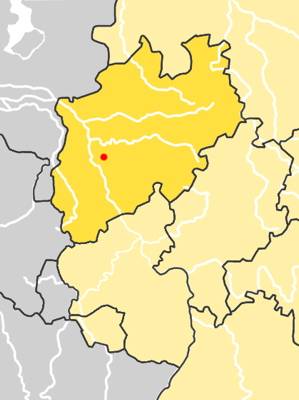 Location of Neander Valley
Location of Neander Valley
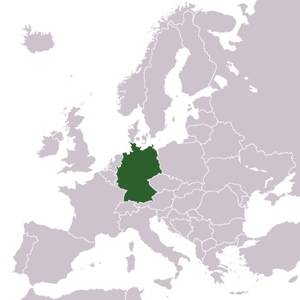 Location of Germany
Location of Germany